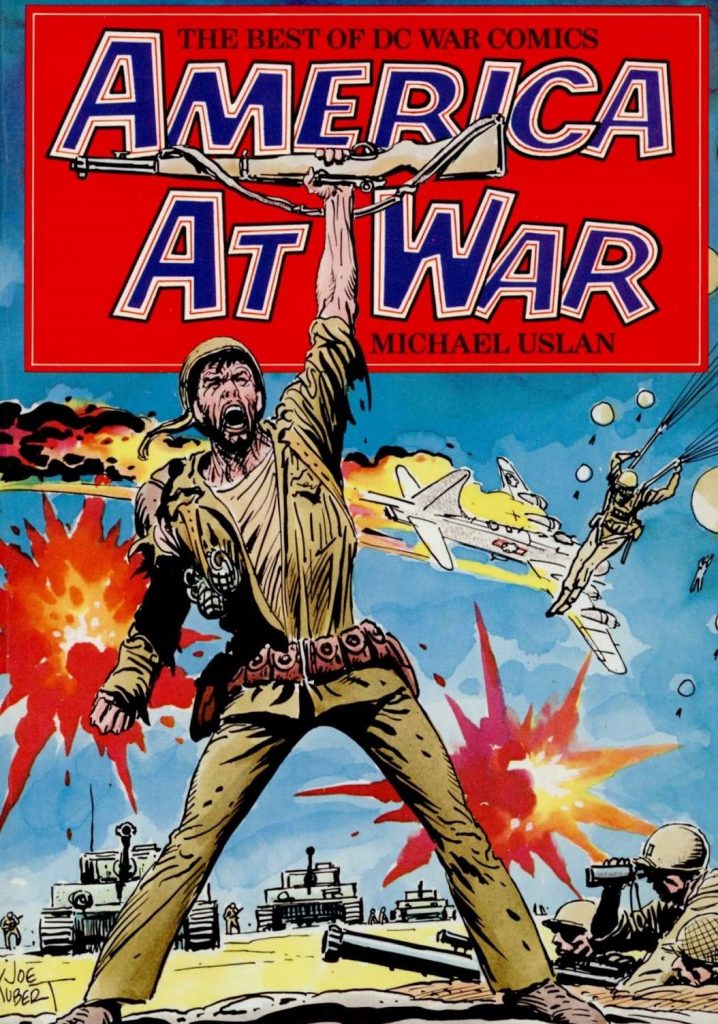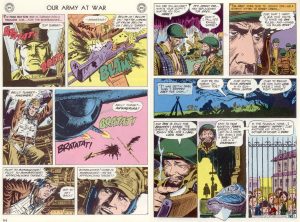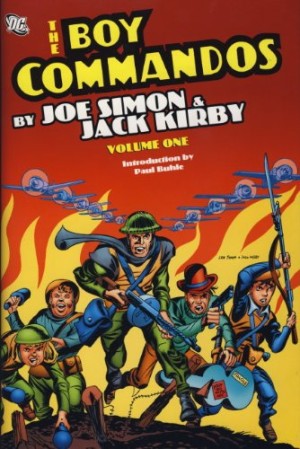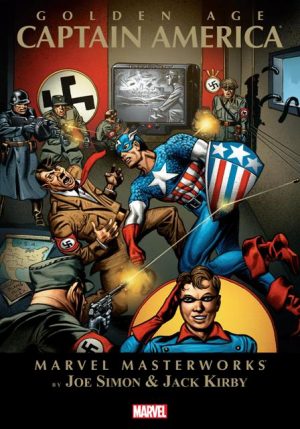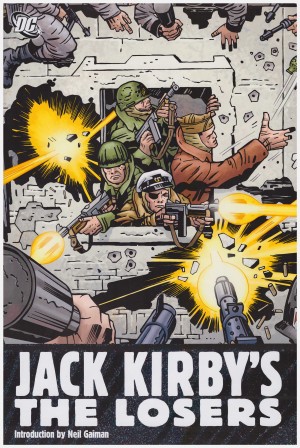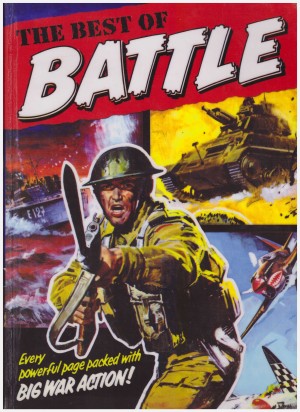Review by Ian Keogh
America at War is an interesting collection simply because of DC’s longevity as a publisher, over 40 years in 1979, allowing for an evolving idea of what war comics should represent. In compiling the selection Michael Uslan attempted to include as many as possible of DC’s primary war heroes, their origin or first story if appropriate, and sorted the content by decade of publication.
The earliest stories offered were produced in the 1940s, Will Eisner and Chuck Cuidera’s Blackhawk leading the way by seeing print before the USA joined World War II and inspiring a whole squadron of flying heroes. Blackhawk, Hop Harrigan and the Boy Commandos, who were more often ground based, are all ensemble casts, fighting both Germans and Japanese. Uslan has been careful to steer clear of the worst racist caricatures produced to demonise a wartime enemy, but these were comics sold as much to the troops then fighting a war as to their children, and the jingoism stretches to Superman, as Clark Kent reports on army life. A sign of the times is the now quaint idea of thoughts represented by bracketed dialogue within standard word balloons. In the days before restoration, Uslan sourced his 1940s material from 1970s reprints, and this section has a crude enthusiasm at its best in Joe Simon and Jack Kirby’s work.
By the 1950s many war comics were produced by creators who’d actually served in WWII. Robert Kanigher wasn’t among them, but from the 1950s to the 1970s he supplied a stream of well researched combat tales putting readers in the planes, battleships and tanks, and ensuring a greater sense of realism about the combat sequences. The likes of Mort Drucker, Jerry Grandenetti, Joe Kubert, John Severin (sample spread left) supplied dramatic visualisations prioritising close-ups and expressions. Most of DC’s most successful war heroes were introduced during the 1950s, Sgt Rock particularly well presented by Kanigher and Kubert, first as a whispered legend. Gunner and Sarge and Mme Marie follow.
Kanigher’s mind was just as fertile in the 1960s, introducing Jeb Stuart’s Haunted Tank, controlled by his Civil War ancestor in times of need, and cleanly drawn by Russ Heath. The terrific Enemy Ace with polished Kubert art follows, using a tormented German protagonist a brave move with World War II not twenty years distant, even if Hans von Hammer’s era was World War I. Troopers versus dinosaurs may have been a crowd pleasing concept for young boys, but even drawn by Neal Adams it’s a bit of a dud. The 1960s section ends with Captain Hunter’s Vietnam experience, Kanigher and Jack Abel updating the combat zone to the then contemporary.
The 1970s selection begins with a Civil War piece from Kanigher and Alex Toth that may have chimed with the anti-war times, but is overwrought. Far better is Sgt Rock having to deal with the troublesome Johnny Doe, beautifully illustrated by Kubert (sample right). Also impressive is Sam Glanzman’s short USS Stevens piece, while David Michelinie and Gerry Taloac’s Unknown Soldier might have produced a long-running feature, but the introduction has little subtlety about it.
War comics have long fallen out of fashion, only Garth Ennis’ stature letting him indulge his love of the genre in the early 21st century. It leaves this as a rare war comics compilation, representative and respectful at the cost of quality throughout, but still featuring some great material.
